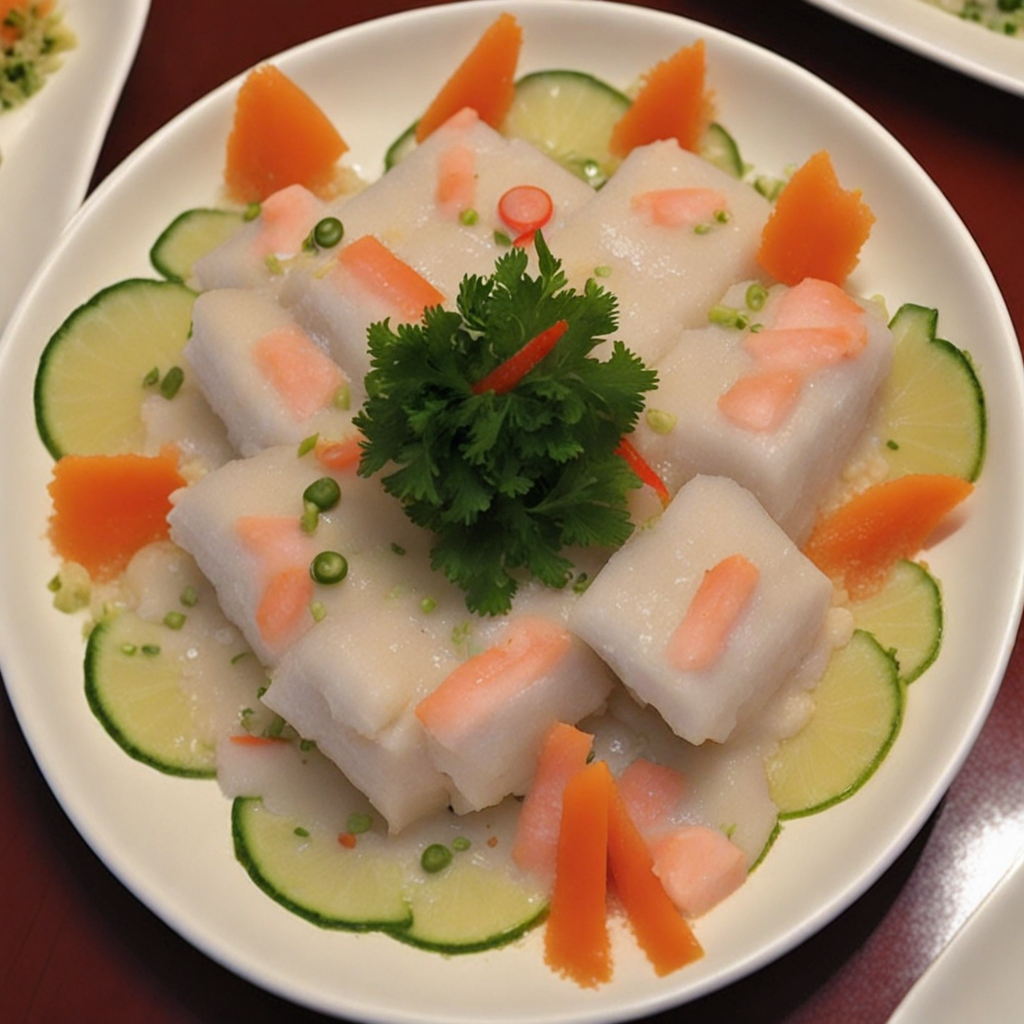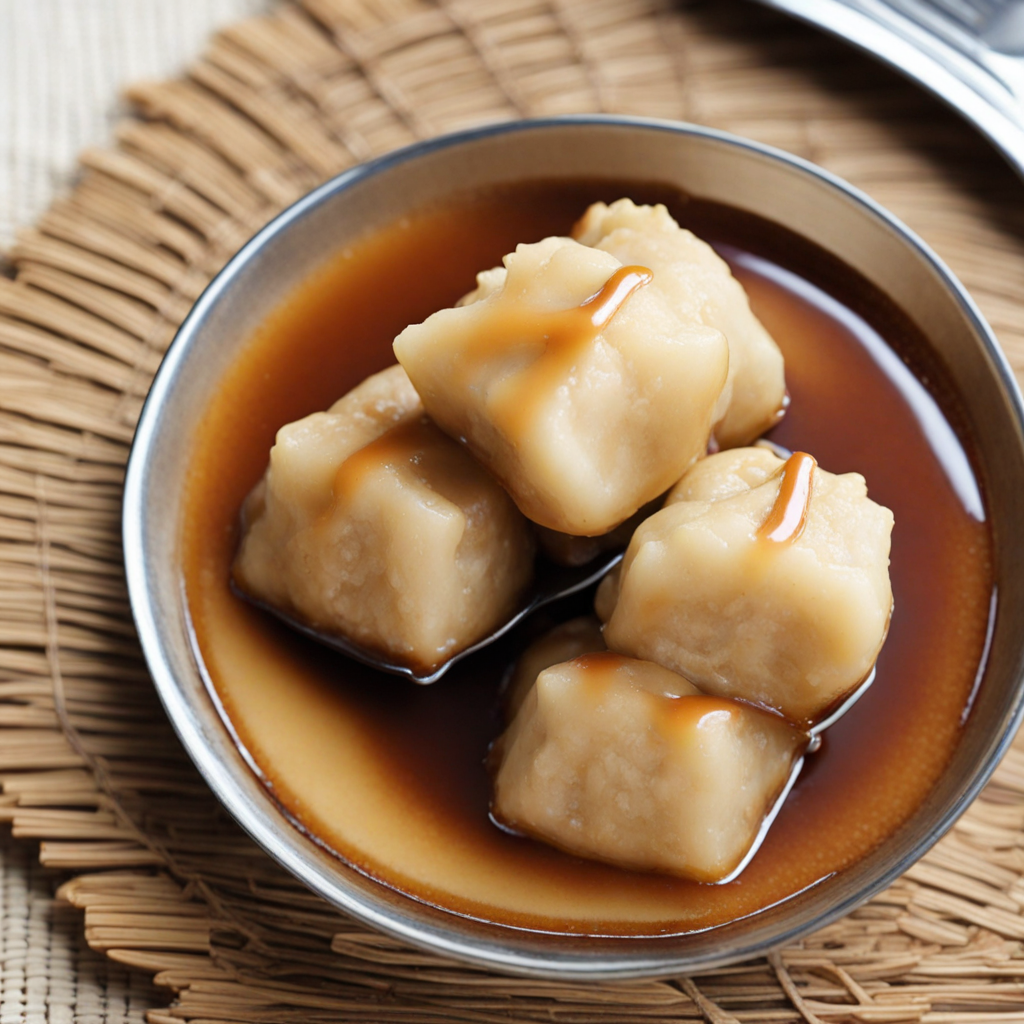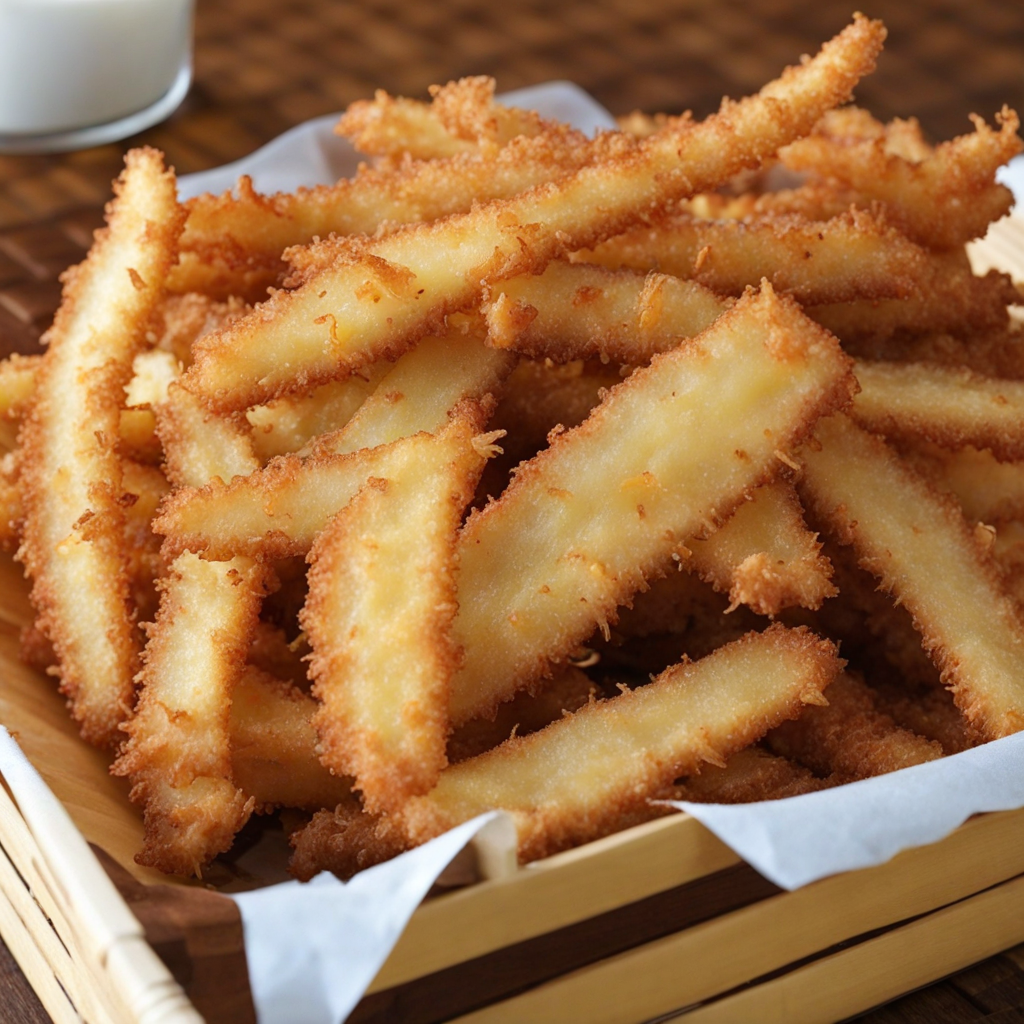Ota Ika
Ota Ika is a refreshing and vibrant dish that captures the essence of Tongan cuisine and is often enjoyed as a light meal or appetizer. At its core, Ota Ika features raw fish, typically tuna or marlin, which is marinated in a mixture of fresh lime or lemon juice. This tangy citrus not only "cooks" the fish through a process called denaturation but also infuses it with a zesty flavor that is both invigorating and addictive. The dish is complemented by a medley of fresh vegetables, such as diced tomatoes, onions, and sometimes cucumber, adding a delightful crunch and balance to the soft texture of the fish. What truly sets Ota Ika apart is its use of coconut cream, which lends a creamy richness that beautifully contrasts with the acidity of the citrus. This combination creates a harmonious interplay of flavors, with the creaminess enveloping the fish and vegetables in a luscious embrace. Additionally, the dish is often garnished with fresh herbs like cilantro or green onions, enhancing its aromatic qualities and providing a burst of freshness with each bite. Served chilled, Ota Ika is the perfect dish for warm days, evoking the breezy, sun-soaked beaches of Tonga. It is typically enjoyed with a side of taro or root vegetables, and it pairs wonderfully with cold beverages, making it an ideal choice for gatherings or casual dining. For those looking to explore new tastes, Ota Ika offers a delightful journey into the flavors of the Pacific, showcasing the simplicity and beauty of fresh ingredients that define Tongan culinary traditions.
How It Became This Dish
The History of ʻOta ʻIka: A Culinary Treasure from Tonga #### Origins ʻOta ʻIka, a traditional Tongan dish, is a vibrant representation of the islands' rich culinary heritage and reflects the resources available in the surrounding Pacific waters. The dish consists primarily of raw fish, typically marinated in citrus juice, and is often accompanied by fresh vegetables, coconut cream, and spices. The origins of ʻOta ʻIka can be traced back to the early Polynesian settlers who arrived in Tonga over a thousand years ago, bringing with them a deep understanding of fishing, farming, and food preservation techniques. The word "ʻOta" in Tongan translates to "to mix" or "to combine," while "ʻIka" means "fish." This simple yet evocative name captures the essence of the dish, which celebrates the freshness of the ocean's bounty. The practice of consuming raw fish is not unique to Tonga; it is seen in various forms across the Pacific Islands, including the Hawaiian poke, the Peruvian ceviche, and the Japanese sashimi. However, ʻOta ʻIka has its unique flavor profile and presentation, making it a beloved dish in Tongan culture. #### Cultural Significance In Tongan culture, food is more than sustenance; it embodies social connections, traditions, and identity. ʻOta ʻIka plays a crucial role in communal gatherings, celebrations, and feasts. The dish is often prepared for significant occasions such as weddings, birthdays, and cultural festivals, where it serves as a symbol of hospitality and generosity. Sharing food is a vital aspect of Tongan culture, and serving ʻOta ʻIka at these events fosters a sense of community and togetherness. Moreover, the preparation of ʻOta ʻIka is often a collaborative effort. Families and friends come together to catch the fish, prepare the ingredients, and create the dish. This collective engagement not only reinforces social bonds but also transmits culinary knowledge across generations. The process of making ʻOta ʻIka is steeped in tradition, with each family or community having its unique variations and secrets, passed down through the ages. #### Ingredients and Preparation The primary ingredient in ʻOta ʻIka is fresh fish, usually local species such as tuna, marlin, or snapper. The choice of fish is crucial, as the freshness and quality directly impact the flavor of the dish. Traditionally, fishermen would catch the fish in the early morning and bring it straight to the kitchen, underscoring the importance of using the freshest ingredients. The fish is typically diced into bite-sized pieces and marinated in lime or lemon juice, which serves to "cook" the fish in a manner similar to ceviche. This acid not only enhances the flavor but also helps to preserve the fish. Alongside the fish, a medley of vegetables such as tomatoes, onions, and bell peppers are added, contributing both color and crunch. Coconut cream is often incorporated, adding richness and a tropical flair to the dish. Seasonings can vary, with chilis, salt, and pepper used to balance the flavors, making each family's rendition of ʻOta ʻIka a reflection of their culinary preferences. #### Evolution Over Time As with many traditional dishes, the preparation and presentation of ʻOta ʻIka have evolved over time. While the fundamental elements remain unchanged, modern influences and globalization have introduced new techniques and ingredients to the dish. In recent years, there has been a growing interest in Tongan cuisine, particularly among younger generations and international audiences. This has led to innovative interpretations of ʻOta ʻIka that incorporate elements from other culinary traditions. For instance, some chefs have experimented with different types of fish or added unique marinades that blend traditional Tongan flavors with influences from Asian or Western cuisines. Others have taken to plating the dish more artistically, transforming it into a visually stunning centerpiece for modern dining experiences. However, despite these adaptations, the core of ʻOta ʻIka remains a celebration of fresh seafood and the Tongan way of life. #### Health Benefits and Sustainability In addition to its cultural significance, ʻOta ʻIka is also recognized for its health benefits. Raw fish is a rich source of omega-3 fatty acids, which are essential for heart health and overall well-being. The dish is typically low in carbohydrates and high in protein, making it a nutritious option for those seeking a balanced diet. The use of fresh vegetables and citrus not only enhances the flavor but also adds vitamins and minerals, contributing to a wholesome meal. Sustainability is another critical aspect of the evolution of ʻOta ʻIka. As awareness of environmental issues grows, there has been an increased focus on sustainable fishing practices in Tonga. Many local fishermen are adopting methods that minimize harm to marine ecosystems, ensuring that future generations can continue to enjoy the bounty of the sea. This commitment to sustainability is reflected in the way ʻOta ʻIka is prepared and consumed, promoting a responsible relationship with nature. #### Conclusion The history of ʻOta ʻIka is a rich tapestry woven with threads of tradition, community, and sustainability. From its humble origins among the early Polynesian settlers to its modern interpretations in a global culinary landscape, this dish remains a cherished part of Tongan culture. It is a testament to the importance of food as a means of connection, celebration, and identity. As we explore the world of cuisine, it is essential to honor the stories behind the dishes we enjoy. ʻOta ʻIka is not just a meal; it is a celebration of Tongan heritage, a symbol of communal bonds, and a reminder of our responsibility to preserve the delicate balance of nature. Whether served at a family gathering or enjoyed at a restaurant, ʻOta ʻIka invites us to savor the flavors of the Pacific while appreciating the rich history that lies beneath each bite.
You may like
Discover local flavors from Tonga







